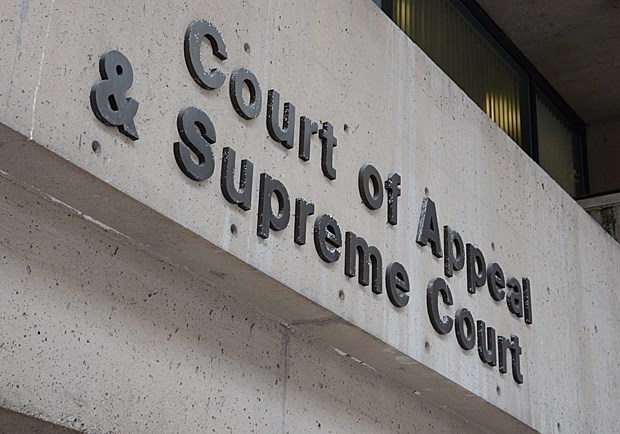A North Vancouver couple is facing some potentially hefty bills after a B.C. Supreme Court justice upheld a municipal order forcing them to mitigate landslide risks on their property.
Mostafa Madaninejad and Fatemeh Khosravi-Amiri have lived for more than 10 years at 1576 Merlynn Crescent. Their property backs on to the top of a steep escarpment on the west side of Hastings Creek.
The property was one of several flagged in a number of geotechnical reports conducted for the District of North Vancouver between 2008 and 2013 as being a potential landslide risk.
The district conducted those studies following a 2005 landslide on the Berkley escarpment that killed one woman, injured others and left several homes destroyed. In the case of the Merlynn Crescent property, engineers said the simplest way to reduce risk would be to remove a deteriorating wooden retaining wall and remove a substantial layer of fill.
But that’s also potentially expensive.
According to court documents, engineers hired by the district continued to monitor the property over several years, noting that sections of the timber retaining wall appeared rotten and that the risk of a landslide from the Merlynn Crescent property was high.
Engineers acknowledged, however, that there are no houses directly below the property. If a landslide happened, it would likely block off access to nine homes on Carmaria Court below, but wouldn’t destroy any houses and so is unlikely to result in a death, according to those reports.
Between 2013 and the present, district staff met with the owners several times. Council eventually issued an ultimatum — either the couple would have to get the mitigation work done or the municipality would do it and bill them. Following that, there were a number of delays and extensions of deadlines.
Eventually, the municipality petitioned the court to enforce its order that the work be completed.
The couple, meanwhile, filed their own petition for a judicial review against the district, arguing their property is not “unsafe” because it does not present an immediate risk to anyone. They argued the district overstepped its authority by forcing them to do the work.
The couple’s son, Armin Madani-Nejad, said in an interview it’s unfair to ask the semi-retired couple to bear the entire financial cost of mitigation. When they bought the property, “They didn’t know there were any issues,” he said.
He added at the time the homes on Carmaria Court below were built, there was already discussion pointing to potential slope dangers of the escarpment that the municipality was aware of. “It shouldn’t have been developed in the first place,” he said. “Yet the district went ahead.”
Madani-Nejad said given that history and the financial hardship his parents are facing, it only seems fair that the district would contribute some substantial portion of the costs to fix the problem.
“They’re paying their taxes,” he said. “It doesn’t make sense for them to bear all the responsibility.”
But the couple is fast running out of options.
In her ruling, B.C. Supreme Court Justice Elizabeth Arnold-Bailey ruled that it is up to the municipality to decide what is “unsafe.”
“In my view, it is clearly within the district’s jurisdiction to consider geotechnical information…when considering matters of safety or potential hazard,” she wrote.
The judge added it’s not necessary for the district to conclude a landslide that started from the property would result in a death before declaring a property unsafe. “It is for the district to determine what level of risk is generally appropriate and then to assess individual properties of concern.”
She noted, “none of the geotechnical experts have recommended the status quo.”
The judge ordered the couple to remove the fill and retaining wall on their property by Oct. 1, 2015.
The couple has since filed an appeal of the decision.
Their son said in the meantime they are trying to see if the work can be done for less than original estimates, which put the potential costs well over $100,000 — perhaps even as high as $350,000.



